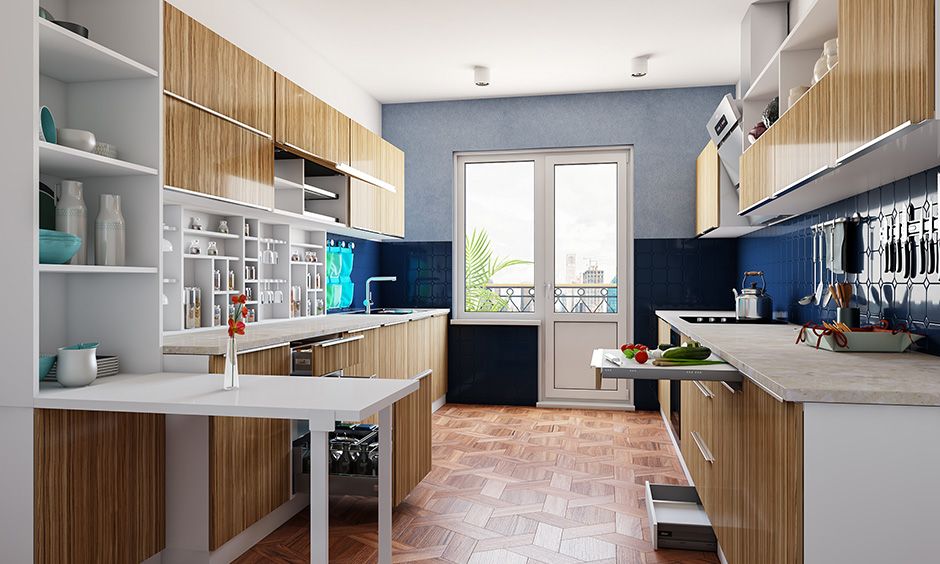Nesting, a word derived from ‘nest’ means placing various parts close to each other to optimize space utilization. This technology is already used in several industries such as plastics, leather, and metals. Except for India, this process is highly demanded in the US and Australia and slowly gaining its reach in Europe as well. This technology uses different cutting ways like routing tools, water jets, lasers, etc.
Difference between NESTING technology and traditional manufacturing
The main difference that separates modular kitchen manufacturers lies in the process of board materials. Traditionally, materials like particle board, MDF, plywood, acrylic, laminated boards, etc are cut by an NC beam saw. After that, the pre-sized panel goes to the edge banding machine and then to a CNC machining center for routing and drilling before it is finally ready.
In the nesting process, pre-sized cutting is eradicated and combined the sizing with routing and drilling in a single machine. It terminates the additional material handling by taking all the previous steps in one shot. This process is performed automatically by CAM software that combines and optimizes geometrics in a single board.
Benefits NEST-based manufacturing
Modular kitchen manufacturers after transforming their traditional ways to NEST-based manufacturing have been benefiting ever since.
- Saving material cost
It provides maximum savings on raw materials, especially on shaped and non-symmetrical parts.
- Set-up time
It takes zero time to set up the machine. Preparing the work cell and placing the boards are the only time-consuming work compared to machine setup. This is an important advantage over traditional ways where manual machines need too much time to set up a single, or a batch of components.
- Material Handling
One of the most important reasons to adopt NEST-based technology is the solution to material handling problems. In most factories workers consume too much time in handling, moving, stacking, and un-stacking components. In a NEST-based process, an operator loads a sheet in the CNC router, and a few minutes later the finished product is ready for dispatch.
- Floor space
NEST-based technology uses less space to operate.
- Precision & Quality
An increase in quality is a big advantage in this form of manufacturing. Modular kitchen manufacturers use CNC routers to provide finished products of great quality and precision.
- Time
The advantages in terms of timing the material flow in the factory are enormous. From raw materials to the finished product, the time consumed in this process is far lesser than the traditional processes.
Conclusion
Before modular kitchen manufacturing plants used traditional ways to manufacture the by-products resulting in taking too much time, raw materials, and labor, and was an extremely costly process. New technology has eradicated the time difference between the processing of raw materials and the creation of finished products by a stretch. Modular kitchen manufacturers are focused on providing the best product they can by using newer and more advanced technologies. Therefore, before deciding on which style to choose from, be wary of the technology that is being used in the process.
You may also like
-
Hiring An Architect To Design Your Home
-
Winter is Coming: A Kansas Building Manager’s Guide to Preventing Frozen Pipes with Commercial Plumbing Services in Kansas
-
How to Install an Artificial Hedge Easily
-
Get Exclusive Diwali Offers on Whirlpool Double Door Refrigerators
-
Who is Best Pipe and Joint System Supplier in Malaysia

